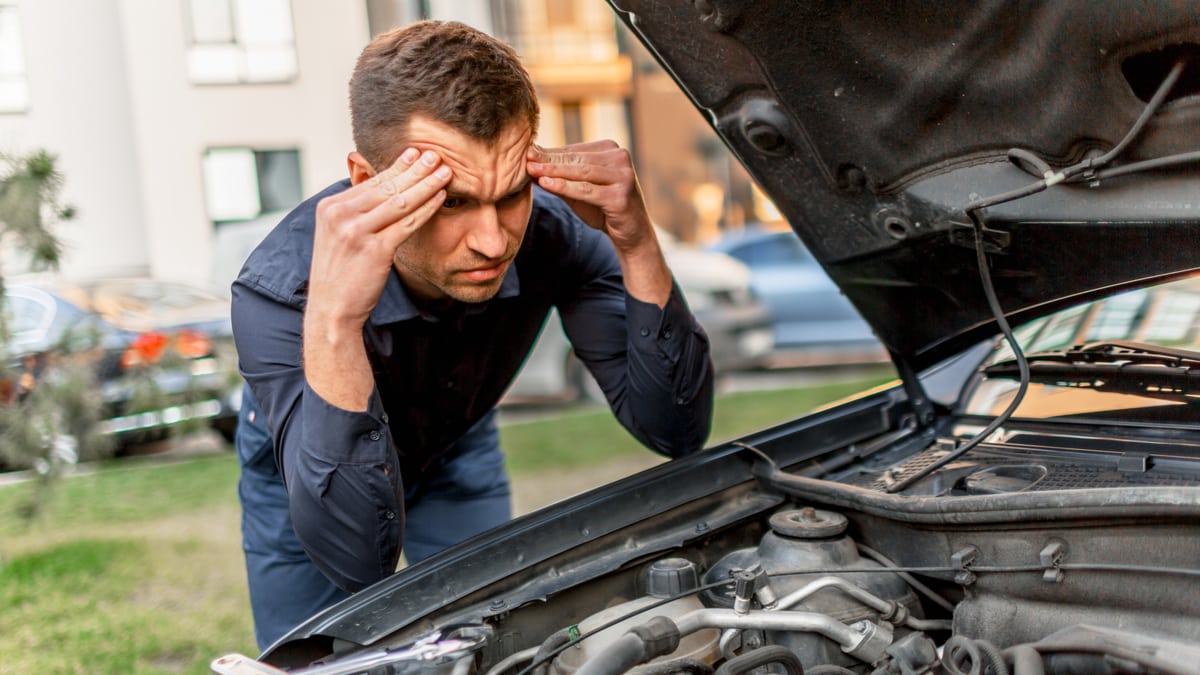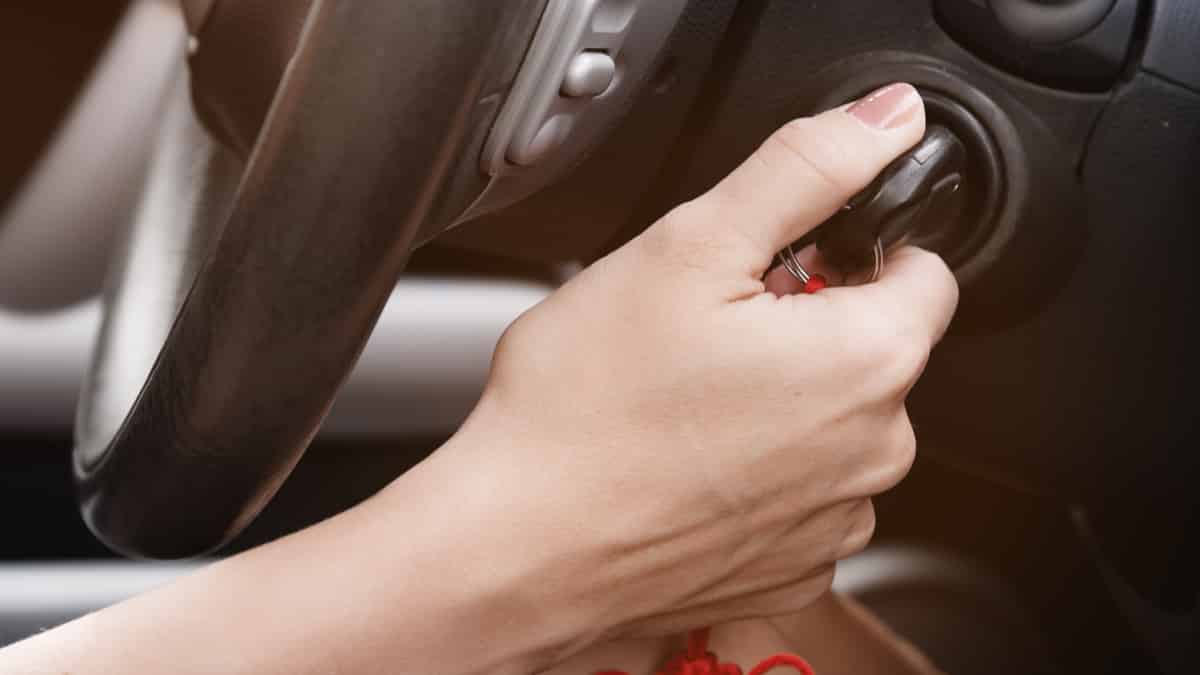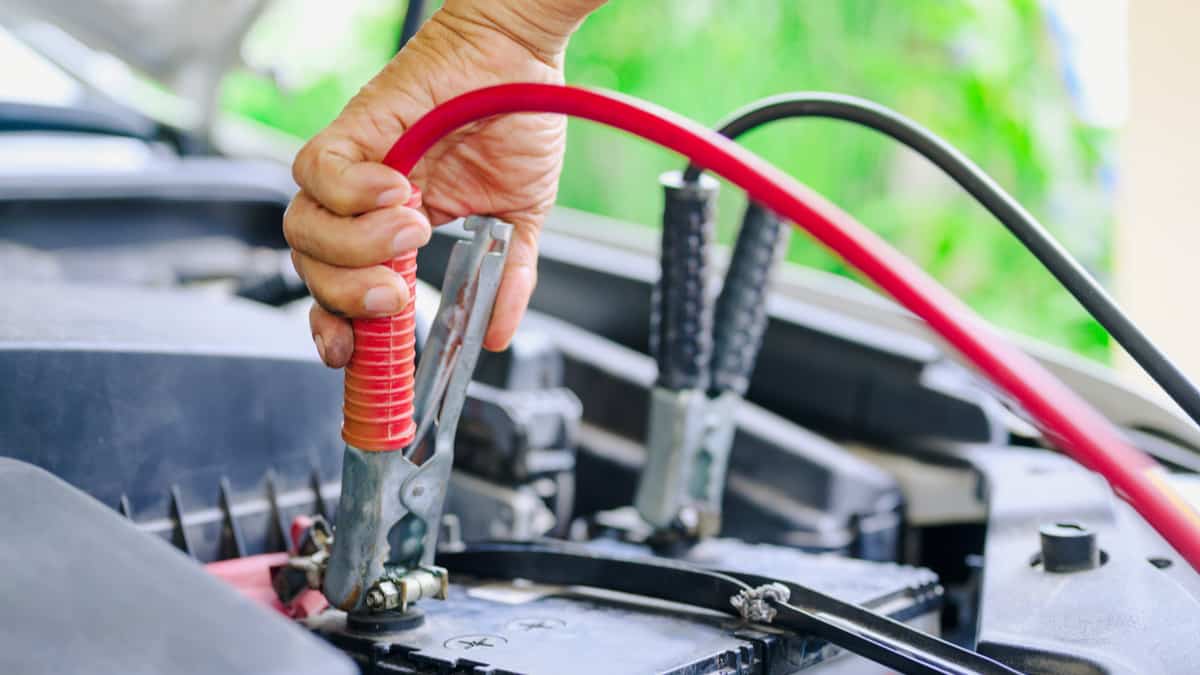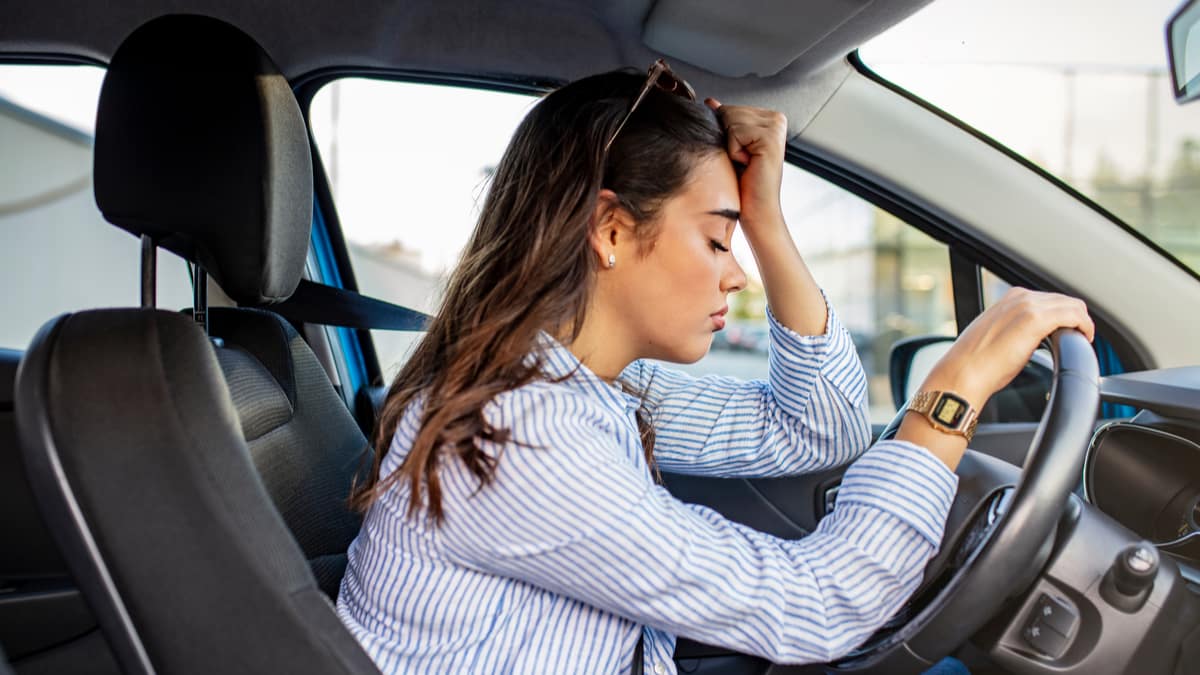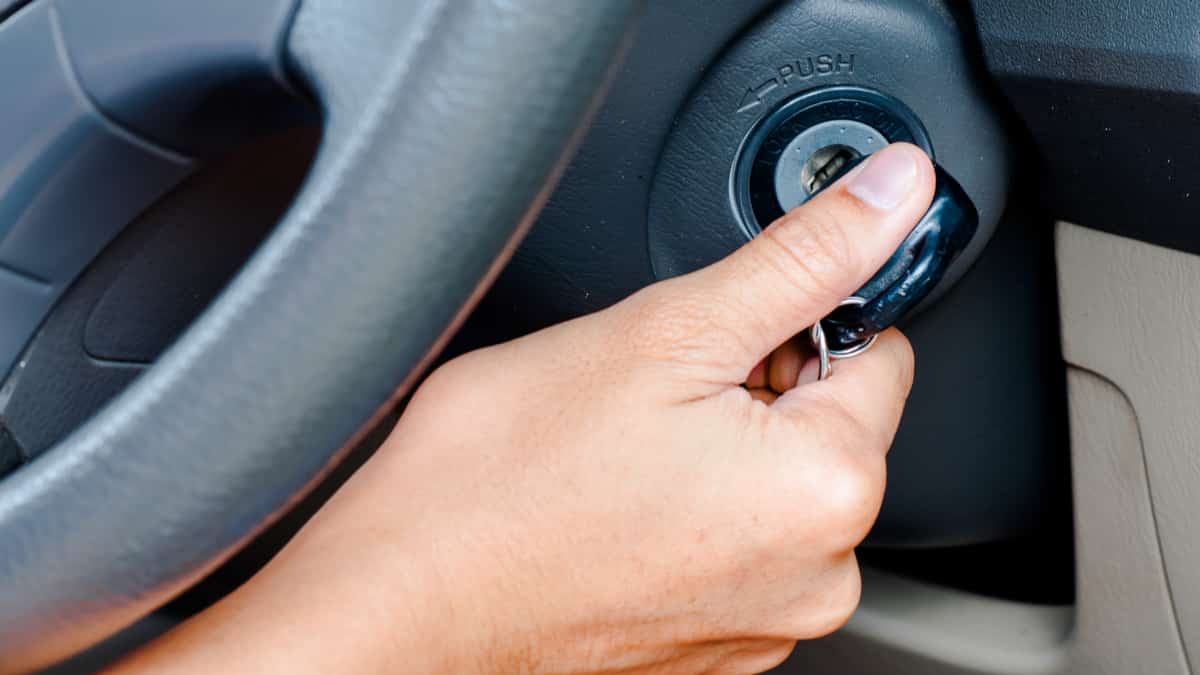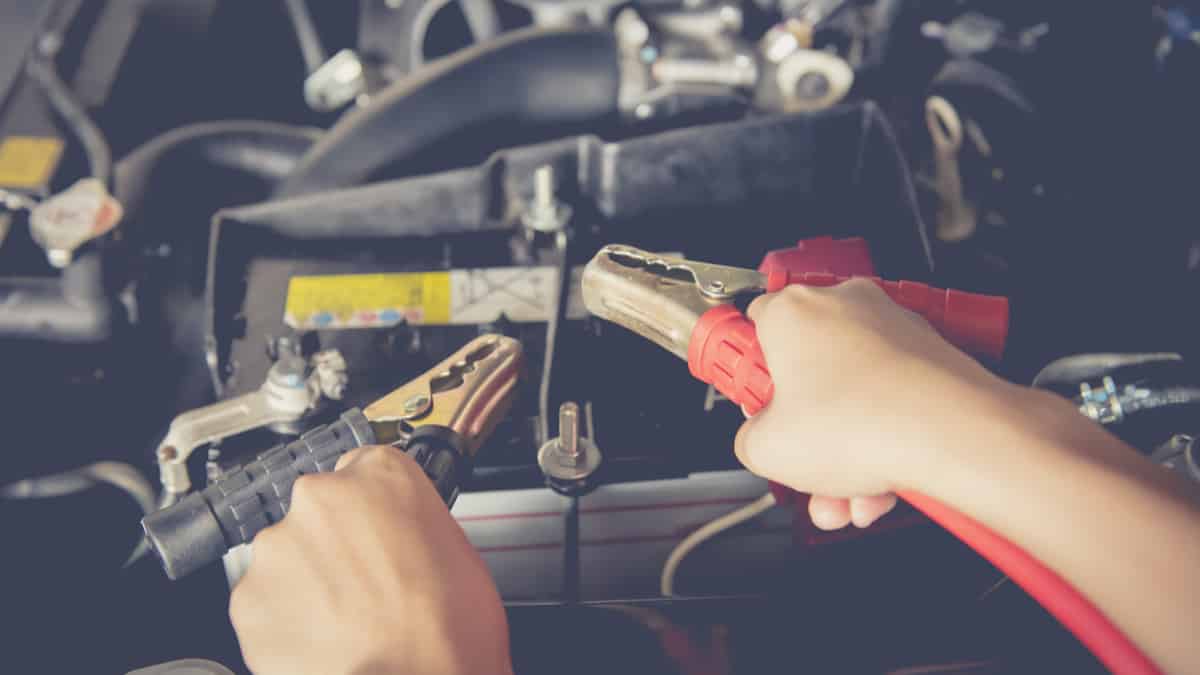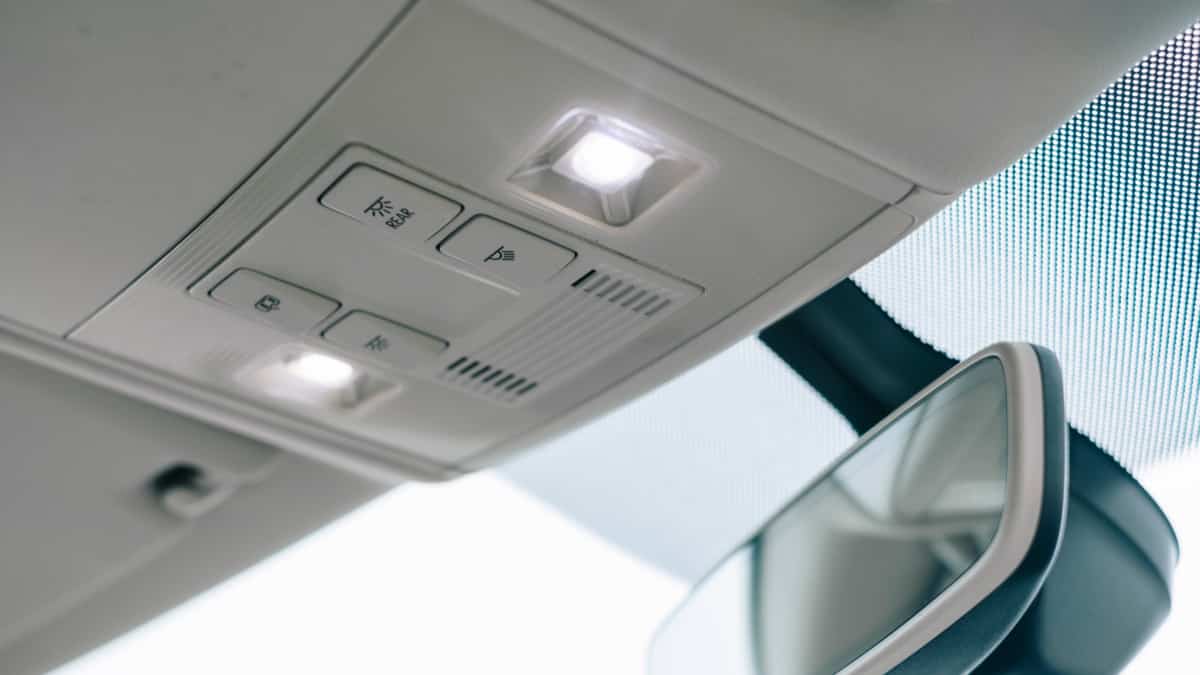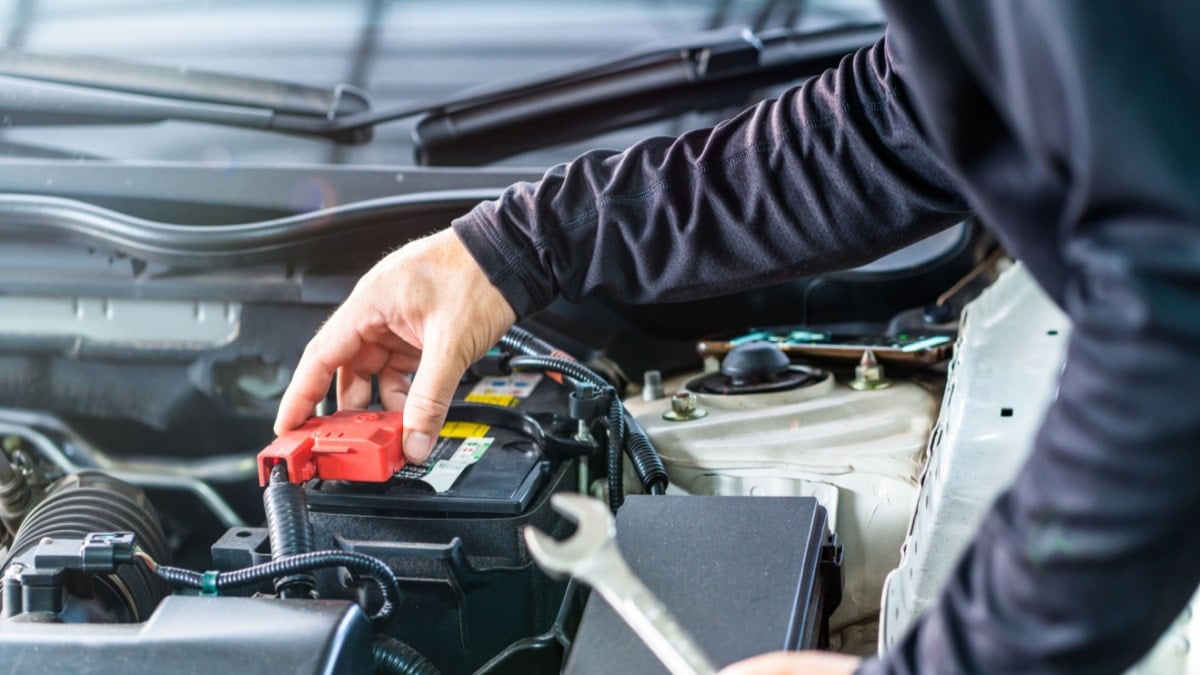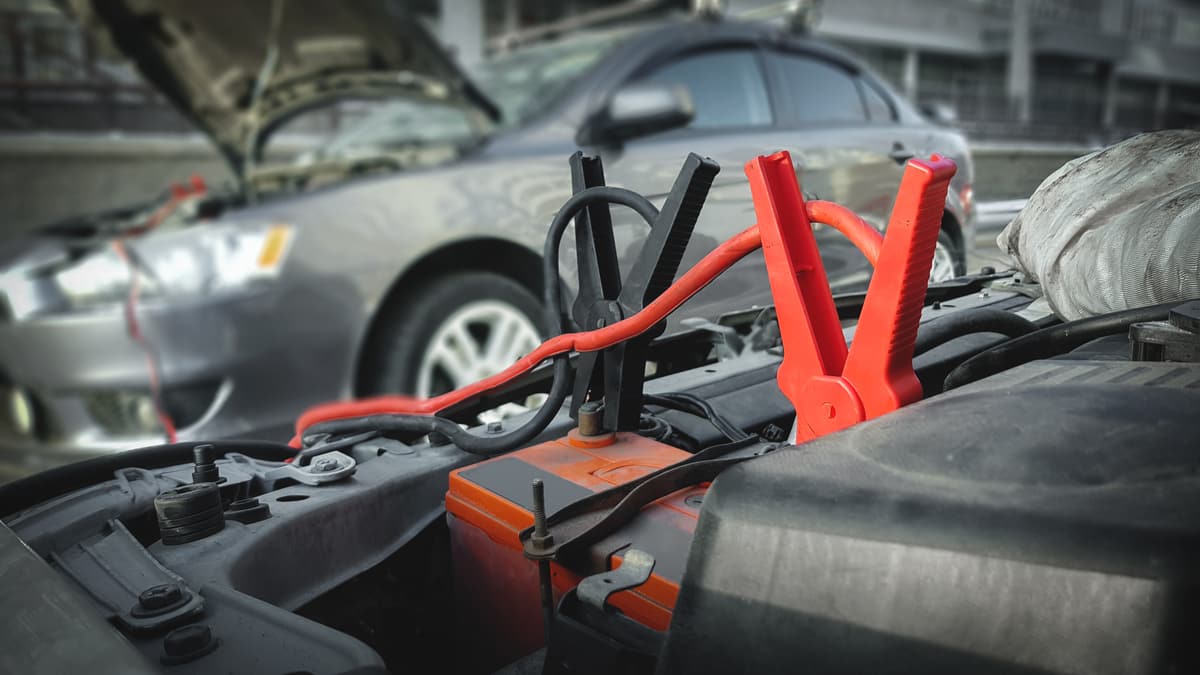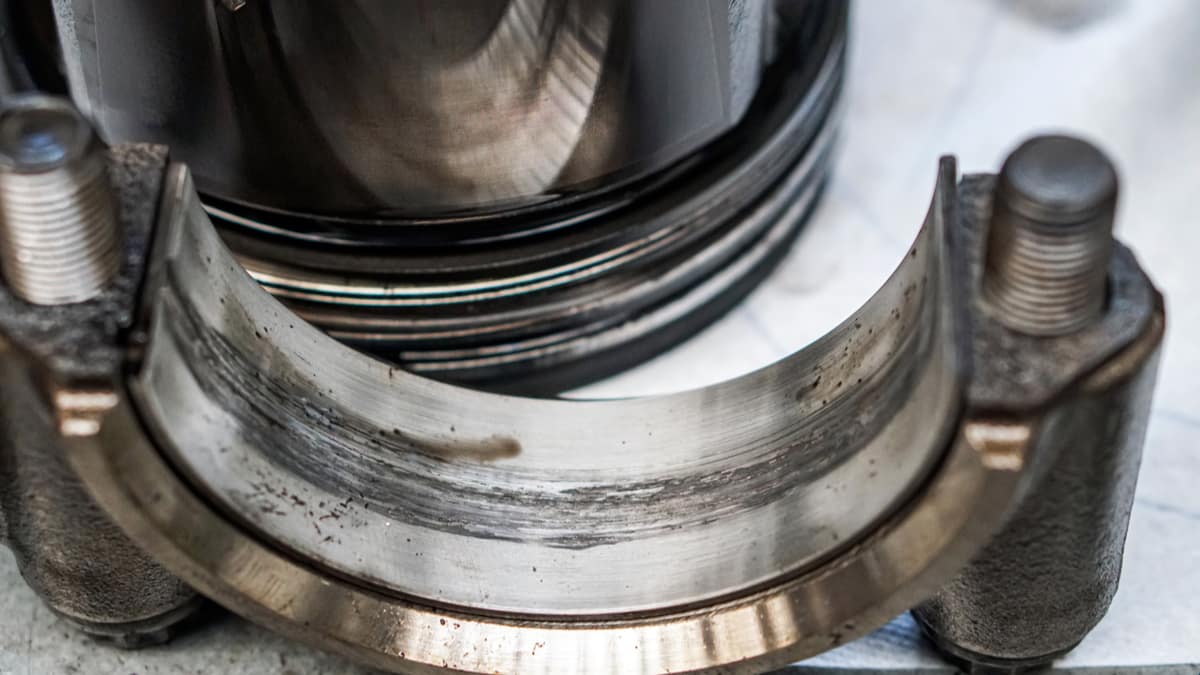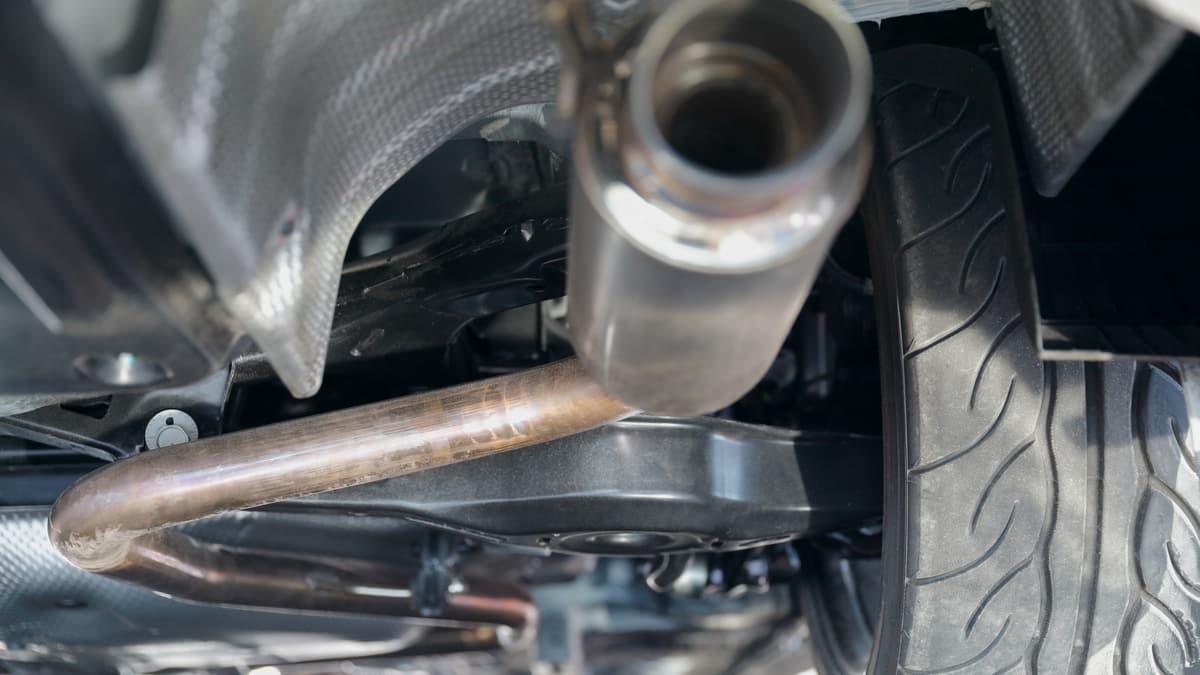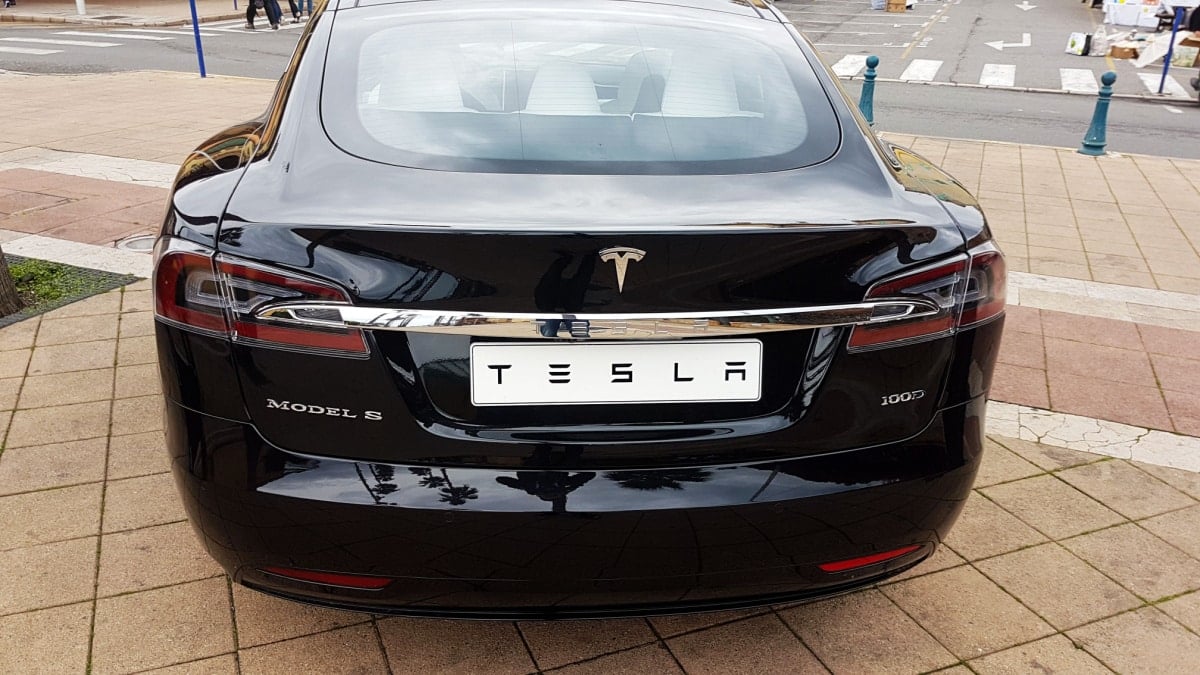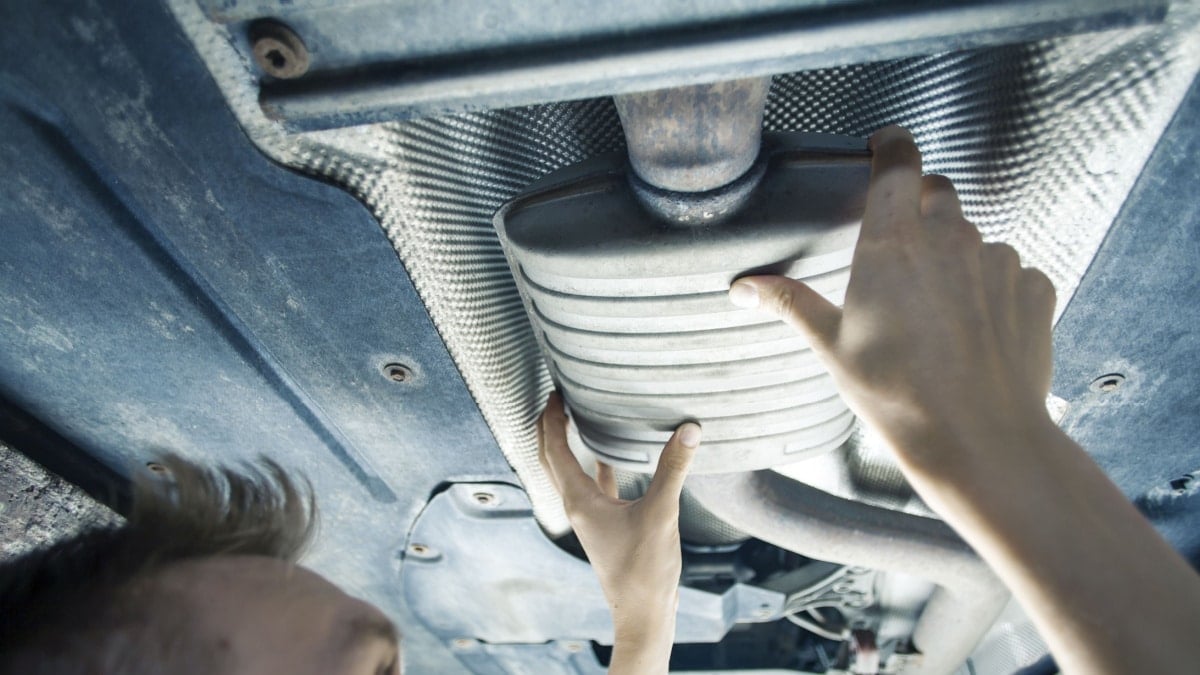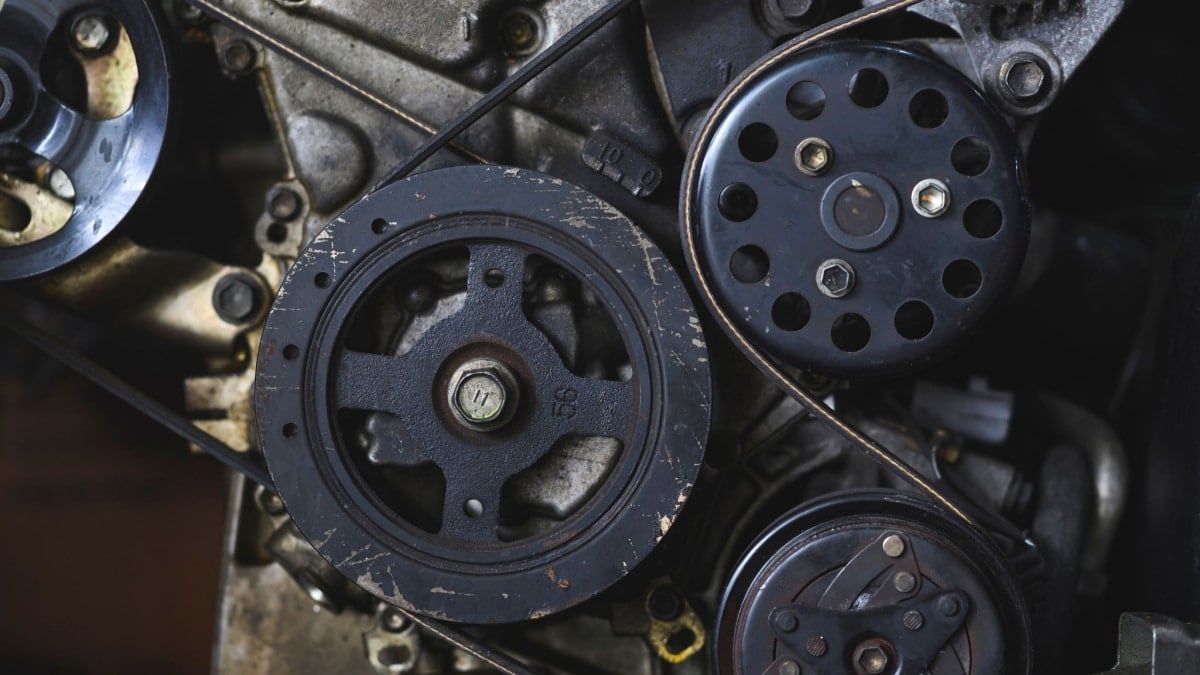There are many reasons your car may not start, but what does it mean when clicking is involved at the same time? If your car clicks when trying to start, you could be looking at a simple fix to a complicated problem.
In this guide, we cover the reasons why you may hear clicking when you turn the key. We also show you a few ways to fix the problem and take a few minutes to answer your most-asked questions.
Reasons Your Car Clicks When Trying To Start
The top reason your car clicks when trying to start the engine is because the battery voltage is low. There could also be a poor connection, or the starter might have failed. The least common issue is a seized engine, which means major repairs are ahead.
Here is a more detailed list of why your car clicks when trying to start it.
1. Low Battery Voltage

Your car battery needs to be fully charged in order to start the car engine. As the battery gets older, it will no longer be able to hold a solid charge. If it has become too weak, you may only hear a rapid clicking sound when you try to start the car engine.
If the battery is newer and there’s no reason for it to be dead, the problem could be a failing automotive alternator. The alternator is needed to charge the battery and is prone to failure at 100,000 miles or more.
RELATED: 6 Symptoms Of A Bad Car Battery and How to Test it
2. Bad Starter
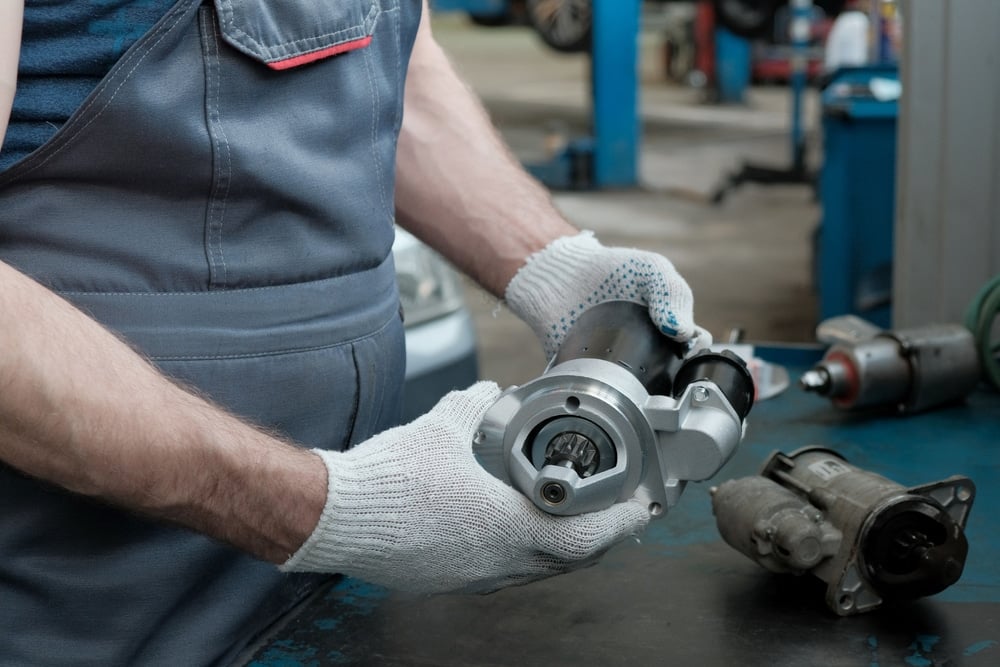
If the starter or starter relay goes bad, you are going to hear a single clicking sound. It’s not going to sound the same as a dead battery.
Starters are meant to last up to 200,000 miles but can also fail prematurely. Depending on what climate you live in, the starter could fail much sooner than it should.
3. Loose or Corroded Battery Terminals
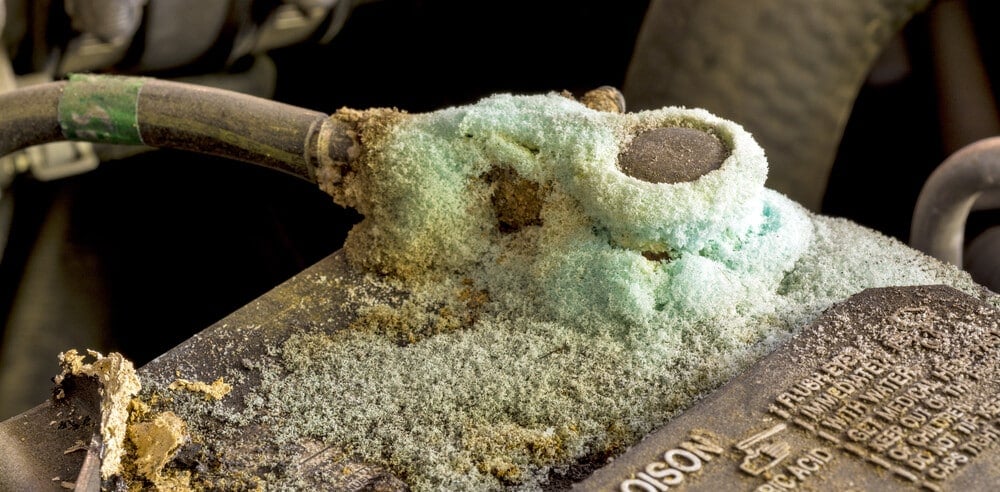
The clicking may resemble a dead battery, even if it’s not dead. If so, the problem could be a loose connection to the battery terminal. It could also be that the terminal connections are corroded.
Connections come loose because of road vibration. Battery corrosion is the result of electrolytes or vapors coming off of the top. Both of these problems are simple to resolve, which we deal with in a minute.
4. Bad Ground Strap
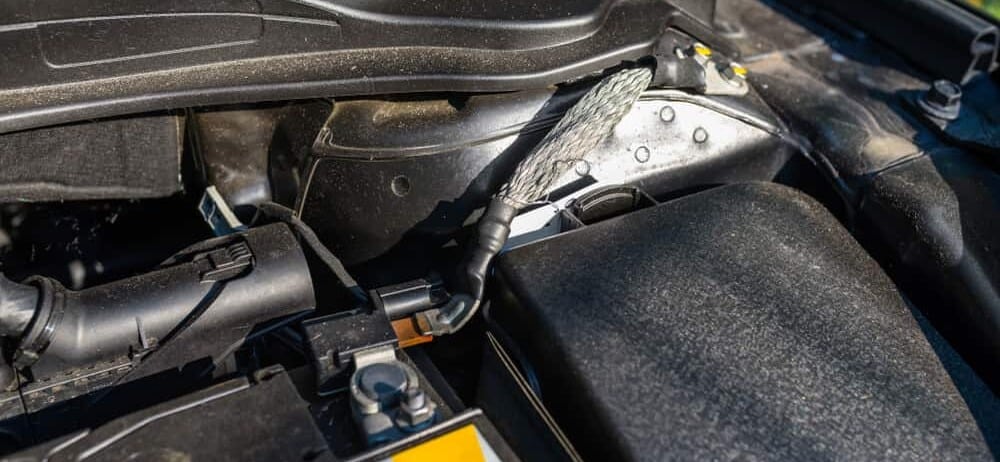
The ground strap is the black wire that connects the negative terminal of the battery to the car’s chassis. It’s also known as a ground wire, ground cable or negative battery cable. This strap serves as a foundation for the car’s electrical system. You will also find a ground strap between the engine and the car’s chassis.
When the ground connection is interrupted, the car may not start, but you could hear a clicking sound. Additionally, you might notice flickering lights and start having trouble with the accessories. This problem can lead to some strange symptoms, so take note of everything that’s occurring.
5. Broken Power Cable
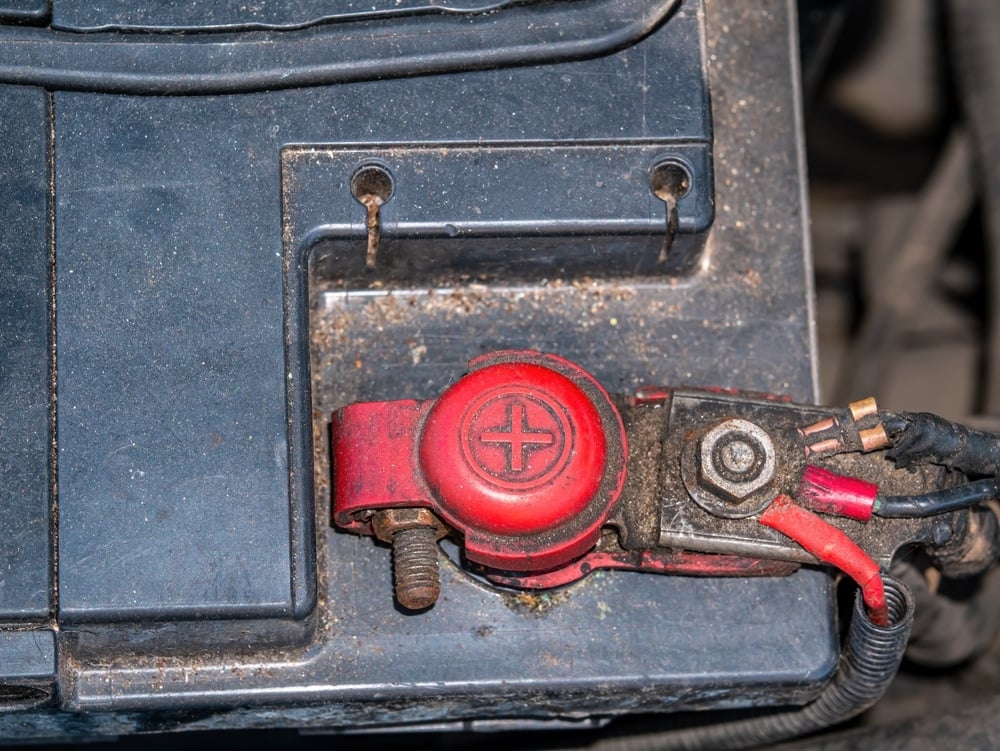
From the battery to all of the electronics, power cables transmit the voltage. If one of the power cables gets broken, it will fail to send the right voltage and the car won’t start.
Cables break over time from excessive use. The vibration of the car and weather conditions can also cause excessive wear. A broken cable is nothing to mess around with. You want to repair or replace it as soon as possible.
6. Seized Engine (Not Common)
A seized engine doesn’t turn over because of significant internal failure. It’s also known as an engine that’s frozen or locked up. Whatever you call it, the engine isn’t going to run. This problem is one of the most expensive to deal with.
The first sign of a seized engine is that it won’t start. Even if it turns over slightly, it’s going to make strange noises. As the starter attempts to engage the engine, it will clunk or click.
How To Fix A Car That Is Making a Clicking Noise When Starting
Figuring out what has caused the clicking noise is the first step to fixing the problem. Once you do that, you can look up proper repair procedures in the service manual or follow the steps listed below.
1. Charge the Car Battery
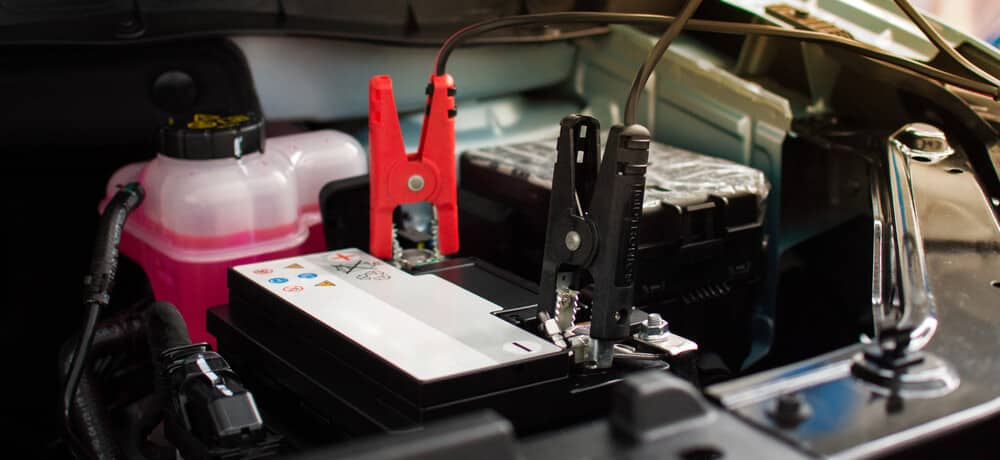
If the car battery has died, it won’t have enough power to start the engine. This happens when the lights have been left on or if the alternator hasn’t been charging the battery. It can also occur because you put the vehicle in storage and forgot to attach a maintainer.
You have several options available to you.
- Jump start the car: Do this option if you are stranded and need to get the car going. Leave the engine run for at least twenty minutes afterward to charge the battery.
- Use a portable jumper: This is another option if you have killed the battery while you are out. Again, you need to let the engine run, so the alternator can charge the battery.
- Hook up a battery charger: If you have time to wait for the battery to charge, this is your best option.
- Hook up a trickle charger: This is a great option if your vehicle is in storage or isn’t used often.
If you get the battery going and it dies again, you may need to move on to step #2 instead.
READ MORE: How to Charge a Car Battery The Best Way
2. Replace the Car Battery
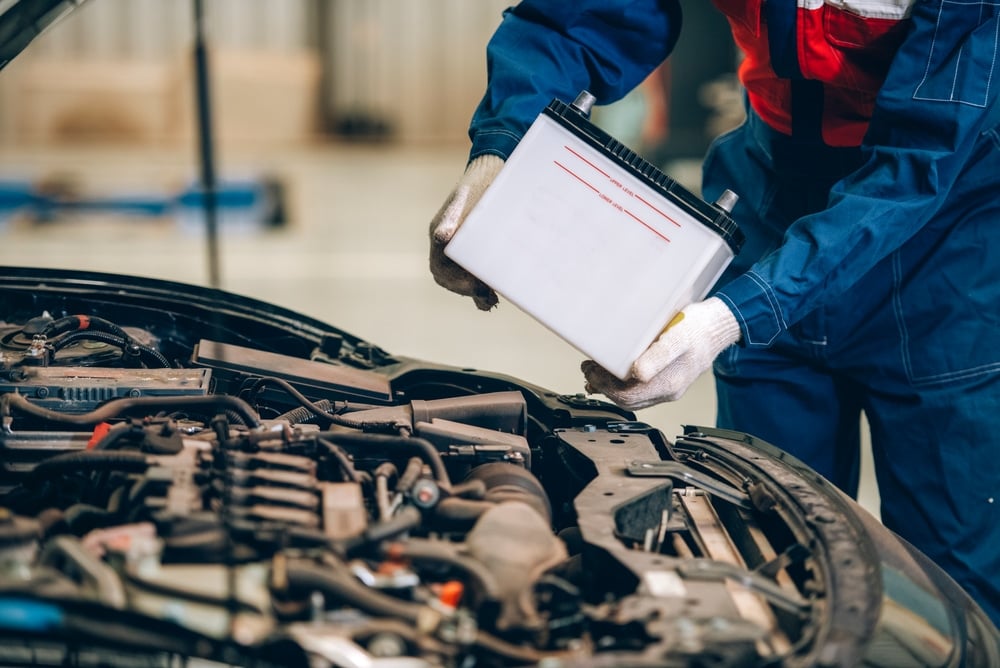
A car battery may only last three to five years. Once it no longer holds a charge, you need to replace it. You can have the car battery tested at a local auto parts store. Additionally, many of these locations will replace the battery for free if you purchase it from them. You may spend $75 to $450 on a new car battery, depending on its specs.
If you replace the battery and the problem still continues, you are probably dealing with a bad alternator instead. Have it replaced to ensure the battery gets the charge it needs. You may spend between $200 and $700 to have the alternator professionally replaced.
RELATED: 7 Best Car Batteries
3. Tap the Starter with a Hammer
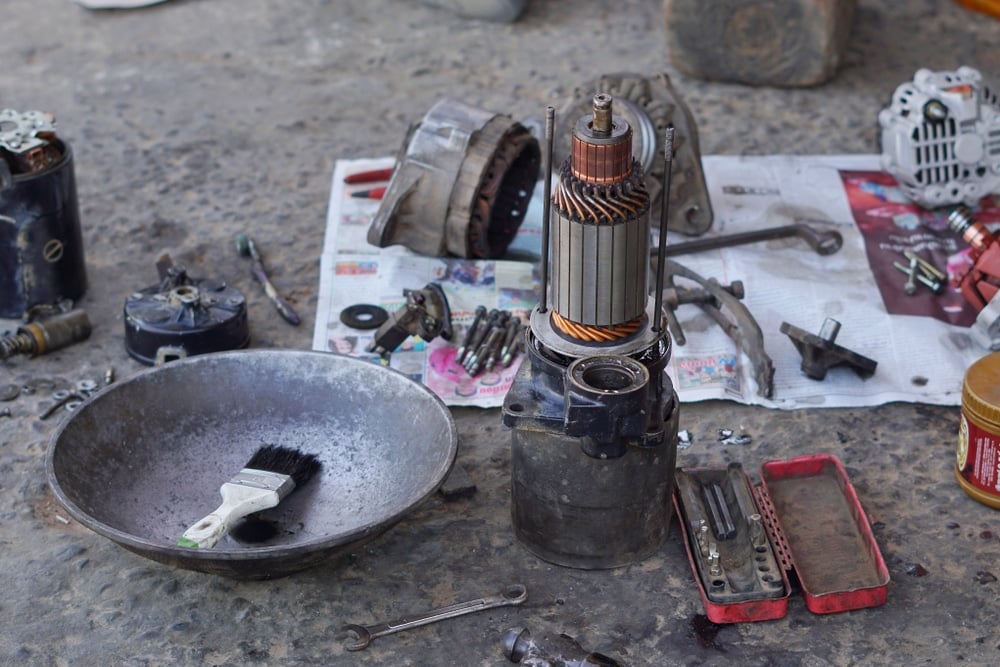
The starter is an electric motor with graphite brushes that wear out over time. If moisture gets into the housing, it can cause rust. A gentle tap on the starter housing may free up what’s jammed. However, this is only a temporary fix.
In the starter, there could be permanent magnets used instead of electric ones. If you hit the starter too hard, the magnets could crack. Once that happens, you will have no choice but to replace the starter. That’s why you want to use caution and give it a mildly weighted tap.
Once the starter begins failing, it’s best to replace it. You may spend $175 to $450 to have a starter replaced.
4. Look for Damaged or Corroded Battery Cables or Ground Strap
Examine the battery terminals for corrosion. If you notice any white buildup on the terminals, you want to clean it up for a better connection. Use a baking soda and water mixture on the terminals. A gentle scrub with a toothbrush should be all that’s needed to remove it.
Here are a few safety tips to keep in mind.
- Wear protective gloves because the corrosion can burn your skin.
- Safety glasses are another preventative measure you may consider.
- If you don’t have an old toothbrush, you can also use a cotton swab. Just don’t use your fingers or a rag you plan to keep.
- If debris is left on the terminals after cleaning them, consider spraying it down with compressed air.
- Dispose of all equipment carefully. Battery acid is corrosive and can cause a lot of damage.
Additionally, you want to check for loose connections. Tighten up any connections that are loose to see if the car starts. Additionally, if any of the cables are worn or damaged, go ahead and replace them. It doesn’t take long to swap out an old cable for a new one.
5. Contact A Professional
You may have some mechanical experience and think it’s easy to fix the problem with starting. After some diagnostic and attempted repairs, you may discover that it’s more than you can handle. It’s okay to admit defeat, especially if you are unfamiliar with the systems you are working with.
Search out a local mechanic that has good reviews. The Federal Trade Commission recommends asking for an estimate before authorizing any work. Additionally, you want to choose a mechanic that offers some type of guarantee. Some shops will offer a warranty on the parts, while others also include the labor charges if something goes wrong.
How do I know if it’s my battery or starter?
When a car battery dies, you may hear a rapid clicking sound. On the other hand, a bad starter normally creates a single clicking noise. The only way to tell the difference between the two is to perform diagnostics. With this information, you can fix the problem and start the engine.
Does a bad alternator make a clicking noise?
You may hear a single clicking noise, but not because the alternator has failed. When the alternator quits, the battery won’t charge anymore. After the battery dies, you will hear a clicking noise when you attempt to crank the engine.
What are the signs of a failing starter?
When the starter fails, you will hear a single clicking sound. It can also cause grinding or whirring noises. Additionally, the engine may fail to start. There could be intermittent problems, with the engine starting some times and not at others. In extreme cases, there could also be smoke from the failing starter.
How much does it cost to fix a bad starter?
On average, you may spend $175 to $450 to replace a bad starter. This cost depends on what type of vehicle you drive and where you go to have it replaced. If you are able to perform the replacement at home, you’ll only have to pay the cost of the parts.
What is the average life of a car starter?
Most starters are rated for about 80,000 starts before it begins dying. With regular driving, this lifespan might be 150,000 miles or more. However, if you live in an area with an extreme climate, the starter could wear out prematurely.
Getting the car started is a top priority, especially if you are running late to be somewhere. At the first sign of clicking when trying to start the car, you should take action to resolve the problem. If you are lucky, you can prevent massive starting issues before you get stranded.
Hopefully, you are only looking at a loose or corroded connection, which would be the easiest thing to fix. Even if you need a new starter, battery or alternator, you aren’t normally looking at an excessive amount of money. The only way you would find yourself in a major jam is if the engine seized, which is unlikely. Even as busy mechanics, we don’t see this rare problem that often.
Tags: Starting Issues
Categories: Electric, Troubleshooting
